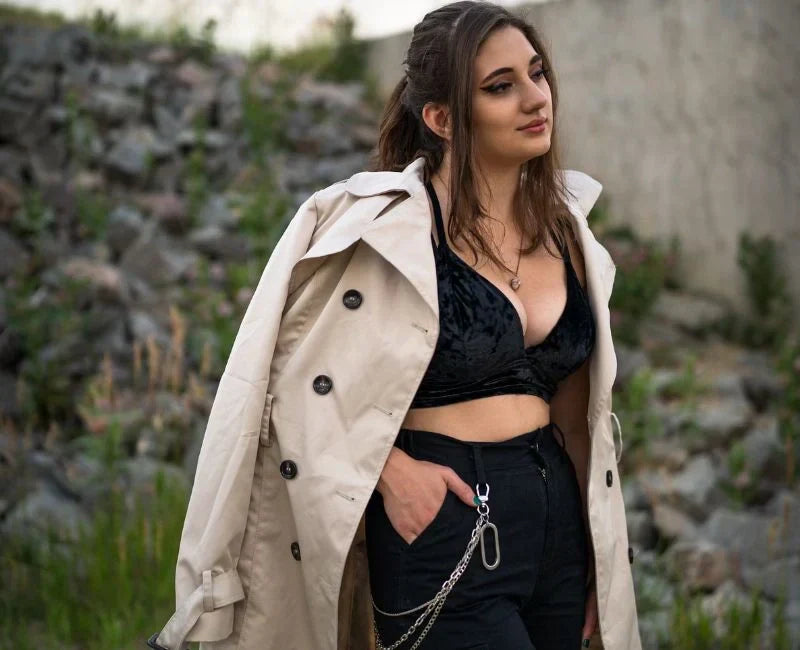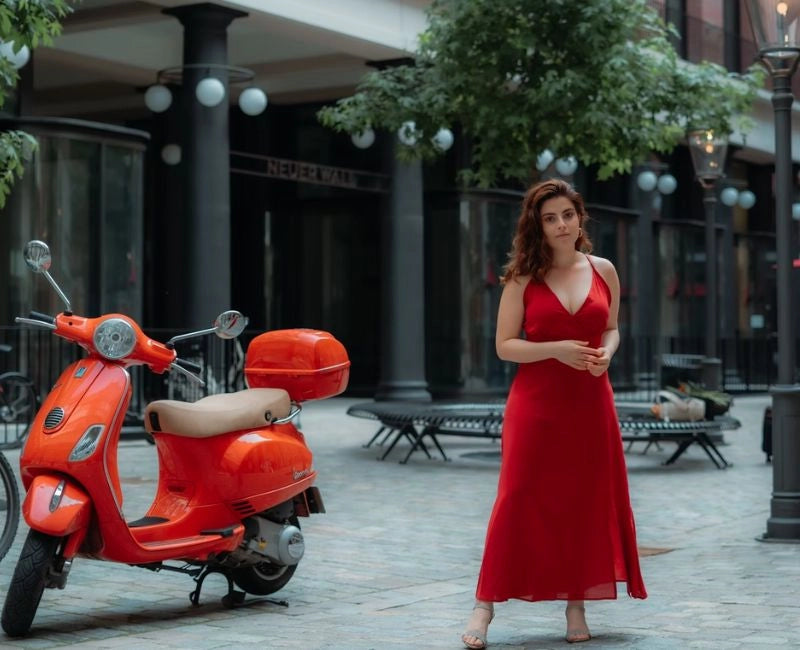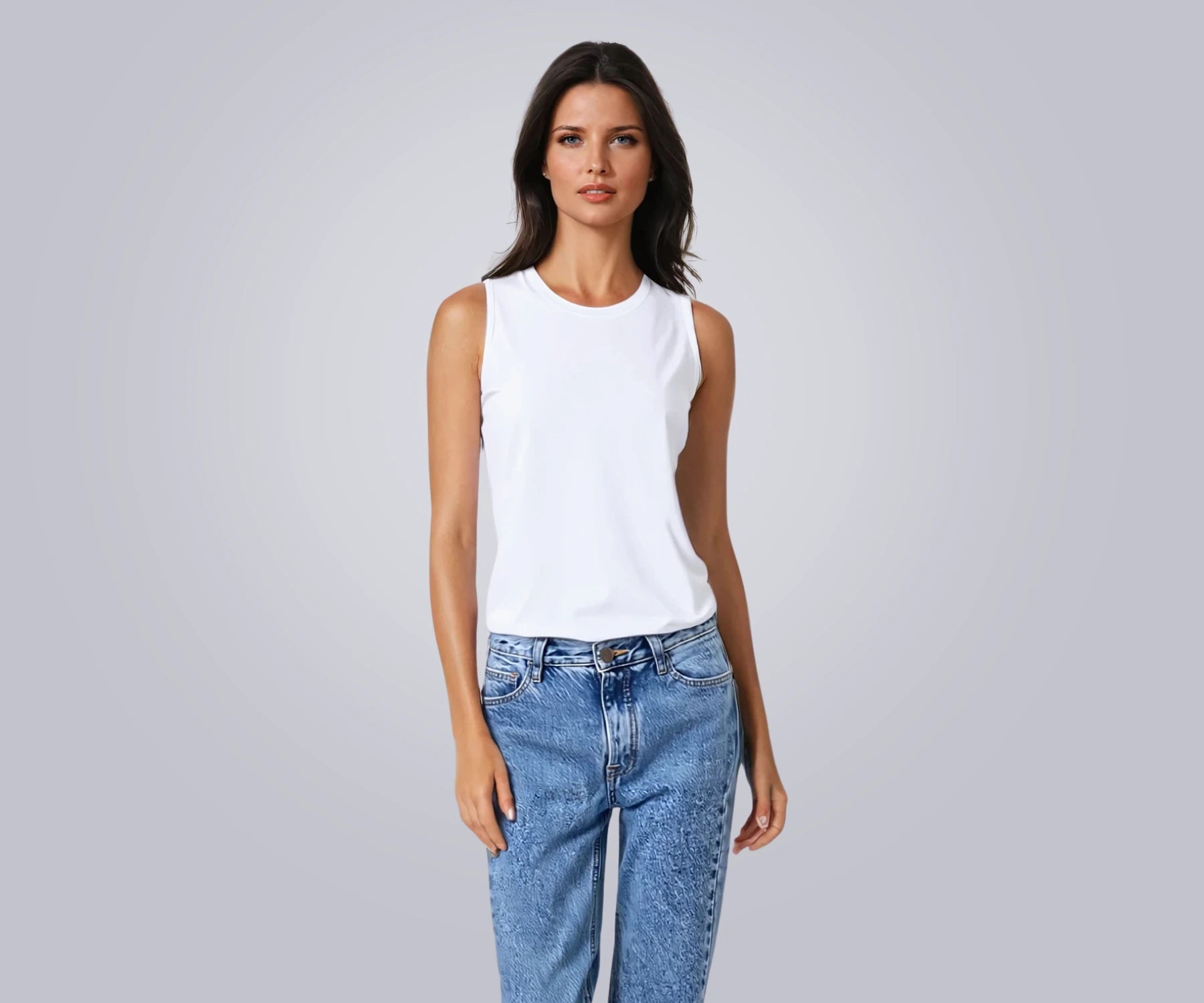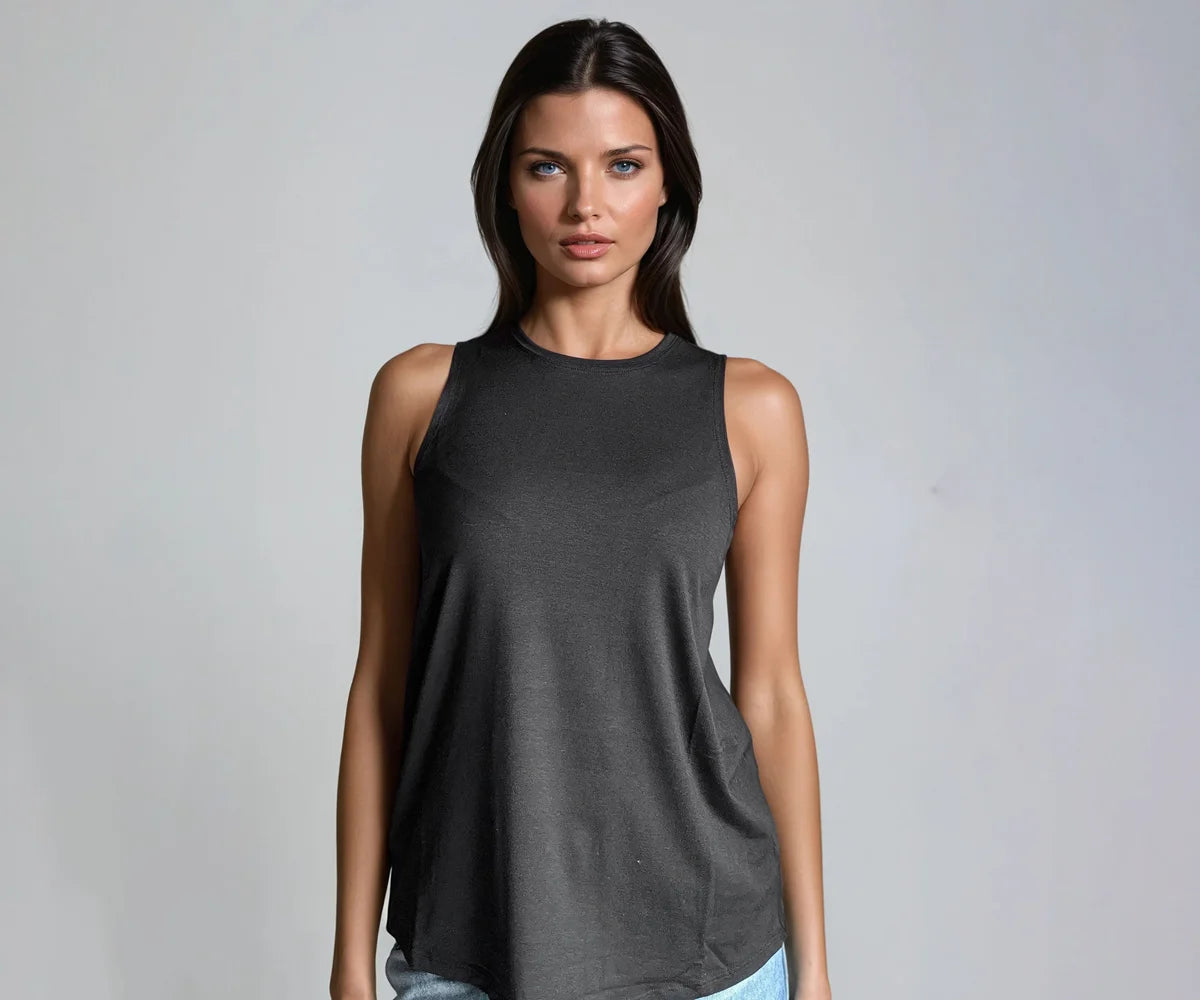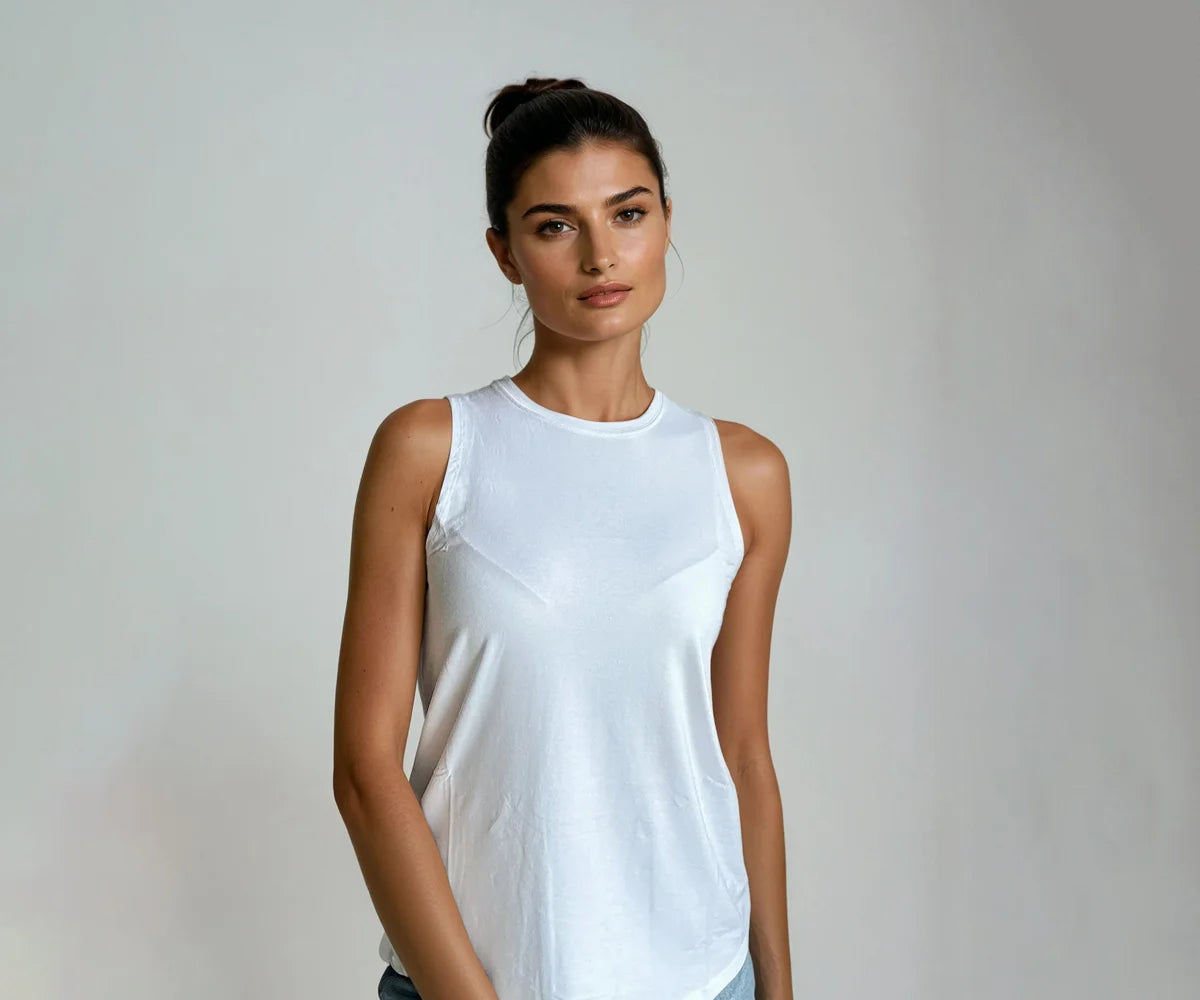The Bicycle: An Unlikely Catalyst for Change
The bicycle, which rose to popularity in the 1890s, became a symbol of independence and freedom for women. However, traditional long skirts and restrictive clothing posed a hazard for women on bicycles. A famous account from 1891 illustrates this point: a female cyclist, described in the journal Sporting Life, recalled how a gust of wind caught her skirt, tangling it in the bicycle's machinery, and abruptly ending her ride.

Images from that era show women struggling with the dangers of long skirts while riding. These visuals and experiences helped underscore the necessity for dress reform, as they highlighted how long, voluminous skirts could not accommodate women’s newfound independence.
This shift gave rise to the Bloomer costume—a radical outfit featuring a shortened skirt with flowing trousers underneath. Named after Amelia Bloomer, an advocate for women’s rights, this attire was initially controversial but grew in popularity as it allowed women to cycle safely and comfortably. This early change was not just about fashion; it was a bold step toward gender equality and societal progress.
You May Also Like: What Clothing Do Young Women Like To Wear The Most?
Social Backlash: The Challenge of Change
While the Bloomer costume symbolized freedom for some, it sparked intense criticism. In College Point, New York, for instance, the local school board prohibited female teachers from cycling to work after several of them took to wearing bloomers.

The board found this attire scandalous, viewing it as an affront to traditional values. However, this controversy only highlighted the need for various groups to promote new styles of dress, as women everywhere were beginning to feel the importance of comfortable clothing that reflected their evolving roles.
The Expansion of Women’s Fashion: From Function to Fashion
The momentum from the dress reform movement gradually influenced mainstream fashion. Throughout the early 20th century, as more women entered the workforce and participated in outdoor activities, fashion began to prioritize functionality alongside style.
This change set the stage for a diverse array of clothing options catering to women of different cultures and tastes, such as indian women clothing and viking women clothing. The idea that women’s clothing could—and should—combine style, comfort, and practicality became widely accepted, leading to the modern array of options we see today.
- Western Women Clothing – The Western approach to women’s fashion embraced trousers, tailored blouses, and practical designs, which came to symbolize the freedom and active lifestyles many women aspired to. Western styles have evolved to include versatile garments like crop tops and tank tops that allow freedom of movement while maintaining a sense of style.

- Muslim Women Clothing – In many cultures, modesty is a cornerstone of women’s attire. However, modern designs have successfully incorporated comfort, allowing for looser-fitting yet stylish garments that suit active lifestyles. For example, modern abayas, hijabs, and other modest attire now feature breathable materials, appealing cuts, and flexible fits that allow women to comfortably engage in activities like cycling and sports.

- Indian Women Clothing – Traditional Indian attire, such as sarees and salwar kameez, is often made of flowing fabrics that allow ease of movement. In recent years, designers have adapted these traditional garments to meet modern needs, introducing lighter fabrics and adjustable designs that cater to both formal and casual settings.

- African Women Clothing – Bold prints, vibrant colors, and free-flowing silhouettes are key elements of African women’s fashion. Contemporary designs now include tunics, dresses, and trousers that allow for activity without compromising on tradition, showing how functionality has been embraced in culturally rich clothing.

The Shift to Online Shopping and Personalized Choices
Today, women are spoilt for choice with diverse clothing options available at the click of a button. The rise of e-commerce has made it possible to purchase everything from sexy women clothing to women’s tees online, allowing for a greater variety of styles, sizes, and colors.
Women no longer have to settle for fashion that prioritizes form over function; they can browse, compare, and select pieces that meet both their aesthetic preferences and practical needs. Stores like All Cotton and Linen offer a curated selection that caters to this demand, with products like Women’s Tees, Crop Tops, and Tank Tops, available in various sizes and styles.
Read More: What is the Difference Between a Singlet and a Tank Top?
The Influence of Historical Fashion Movements on Modern Trends
The desire for safe, comfortable clothing was not a passing trend; it was the beginning of a new era in women’s fashion that continues to resonate today. Brands and designers worldwide now draw inspiration from historical movements like the dress reform era, creating collections that blend practicality with style.
Whether it’s the timeless appeal of viking women clothing or the sleek designs found in women clothing stores near me, the focus remains on empowering women through fashion choices that honor their needs and aspirations.
Buying Options to Consider
To meet the varied demands of modern women, many brands have embraced the spirit of historical reform by offering comfortable, versatile options that cater to different styles. All Cotton and Linen, for example, provides:
- Women’s Tees: Soft and durable, available in neutral and vibrant colors, catering to both casual and active lifestyles.
- Crop Tops: Trendy and breathable, suitable for both indoor lounging and outdoor adventures.
- Tank Tops: Functional and stylish, these tops come in various cuts and colors, ideal for layering or wearing solo.
These pieces offer a modern solution to the age-old demand for clothing that balances comfort and style. Available in various sizes, they provide options for all body types, ensuring that no woman has to compromise on comfort or confidence.
Read Related: The Comfort Factor: Why Women Love Rib Knit Tees
The Legacy of Dress Reform and Modern Fashion’s Future
The pursuit of safe and comfortable clothing in the late 1800s did much more than reshape wardrobes; it sparked a movement that altered societal norms and granted women new freedoms. Modern clothing continues to draw from this legacy, showcasing how functional attire can empower women without compromising on style.
Today’s fashion landscape, which ranges from women clothing online to neighborhood boutiques, reflects the same principles that early reformers championed. The shift toward versatile, accessible clothing has made it possible for women around the world to express themselves freely, whether they’re choosing traditional garments or the latest Western trends.
In conclusion, the demand for safe and comfortable clothing was far more than a simple fashion trend. It was a foundational shift that redefined women’s roles, challenging society to see women as individuals deserving of the same freedoms as men.
This movement not only influenced practical designs but also paved the way for diverse styles, from African women clothing to muslim women clothing, creating a world in which women can finally dress to express who they are and how they want to be seen. As we look to the future of women’s fashion, it’s clear that this legacy of freedom, comfort, and self-expression will continue to inspire and shape trends across cultures, generations, and geographies.




